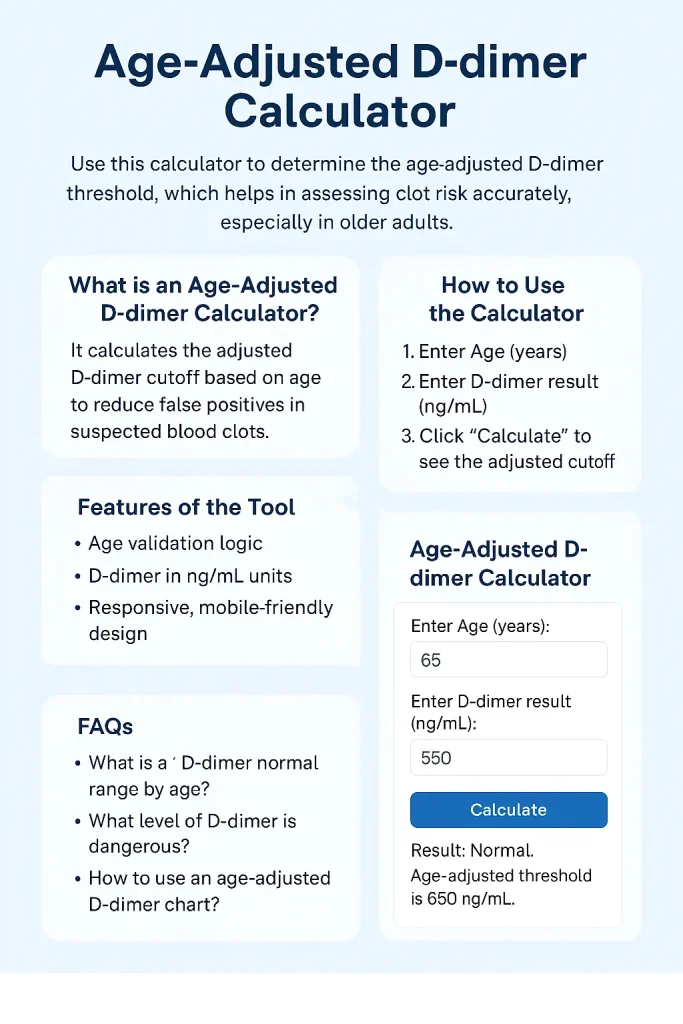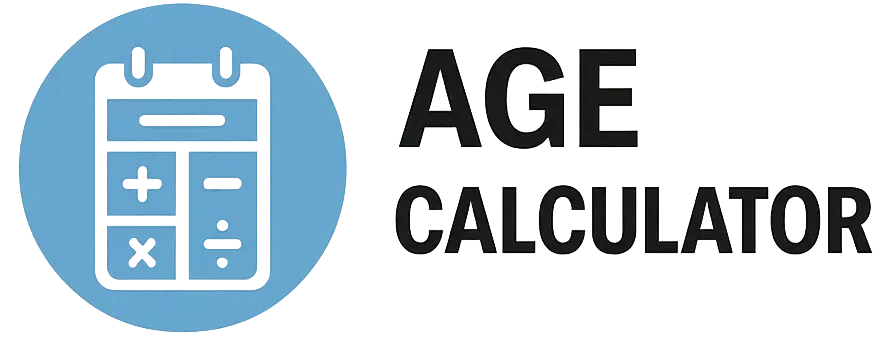Age-Adjusted D-dimer Calculator
Have you ever wondered how D-dimer test results change as you age? D-dimer levels naturally increase over time, which can lead to unnecessary imaging and anxiety. That’s why clinicians now use an Age-Adjusted D-dimer Calculator to interpret these results more precisely—especially in cases involving suspected deep vein thrombosis (DVT) or pulmonary embolism (PE). This tool is an evidence-based way to reduce false positives in older adults and improve clinical decision-making.
Try our fast and responsive calculator below to find out your adjusted threshold based on your age and test values!
What is an Age-Adjusted D-dimer Calculator?
An Age-Adjusted D-dimer Calculator helps adjust the threshold of a positive D-dimer result according to your age. D-dimer is a fibrin degradation product often elevated when a blood clot is present. However, aging naturally increases baseline D-dimer levels, making a one-size-fits-all cutoff less useful.
Age-Adjusted D-dimer Formula:
For patients aged >50 years:
arduinoCopyEditAdjusted D-dimer cutoff (ng/mL) = Age × 10
For example, a 70-year-old would have a threshold of 700 ng/mL, rather than the standard 500 ng/mL.
This method aligns with modern diagnostic practices and is especially valuable in avoiding unnecessary CT scans or ultrasounds when evaluating potential DVT or PE cases.

How to Use the Tool
Follow these steps to calculate your age-adjusted D-dimer threshold:
- Enter your age (must be above 50 for adjustment).
- Input your D-dimer test result (in ng/mL).
- Click Calculate to see if your result exceeds the age-adjusted normal range.
Features of the Tool
- Responsive design: Works across desktop, tablet, and mobile.
- Age validation logic for accurate calculations.
- Built-in unit: Uses ng/mL (common in most labs).
- Stylish UI with shadows and transitions.
- Easy-to-use and fast response time.
Frequently Asked Questions
What is the normal range for D-dimer?
Typically, D-dimer values below 500 ng/mL are considered normal. However, this cutoff changes with age.
What is considered a dangerous level of D-dimer?
Levels significantly above 1,000 ng/mL may indicate serious clotting issues and should be evaluated urgently.
How does age-adjustment improve D-dimer interpretation?
It reduces unnecessary imaging in older adults by raising the threshold according to age, based on clinical evidence.
What units are used for D-dimer levels?
Common units are ng/mL (nanograms per milliliter), though some labs may report in µg/mL or mg/L.
How do I convert µg/mL to ng/mL?
Multiply µg/mL by 1,000. For example, 0.5 µg/mL = 500 ng/mL.
Conclusion
The Age-Adjusted D-dimer Calculator is a simple yet powerful tool for clinicians and patients to interpret D-dimer test results more meaningfully. Whether you’re managing your health proactively or confirming a diagnosis, this tool can help eliminate ambiguity—especially for those over 50.
